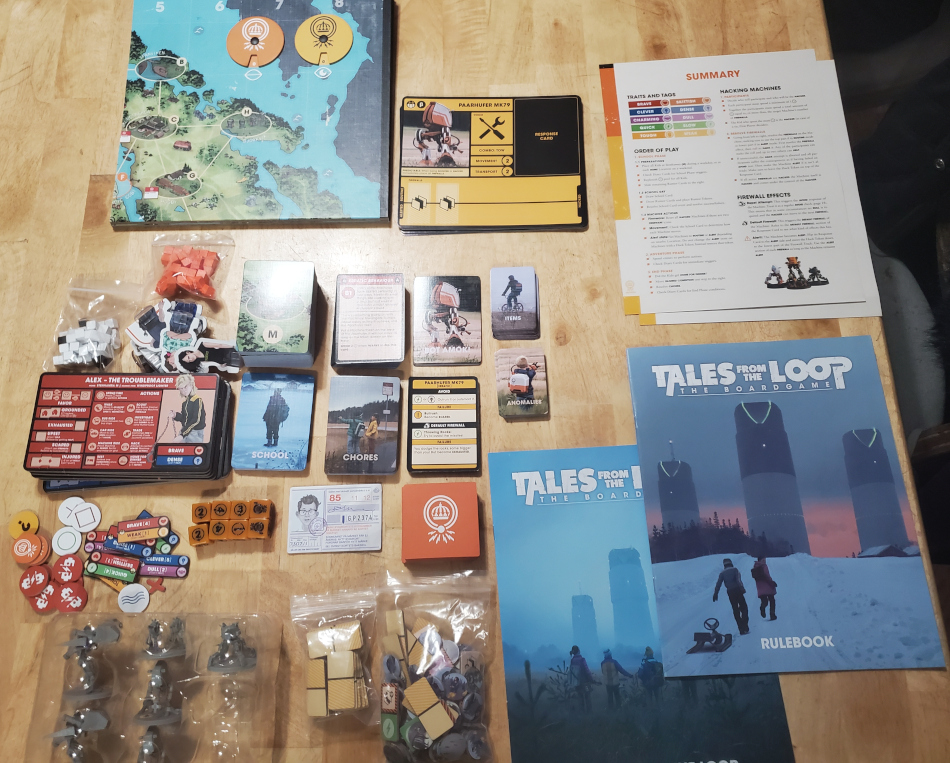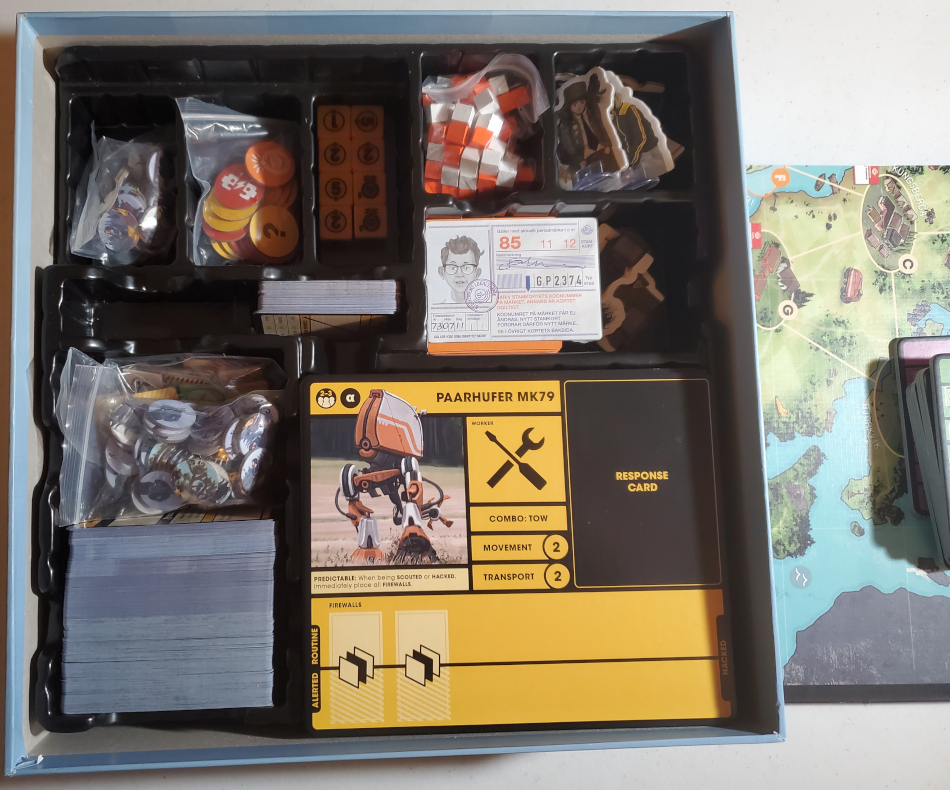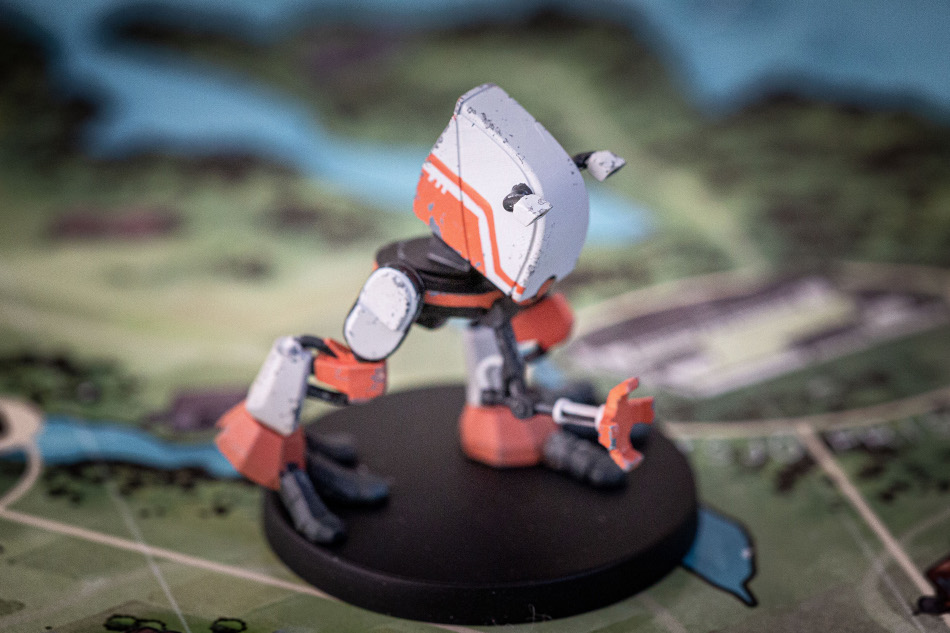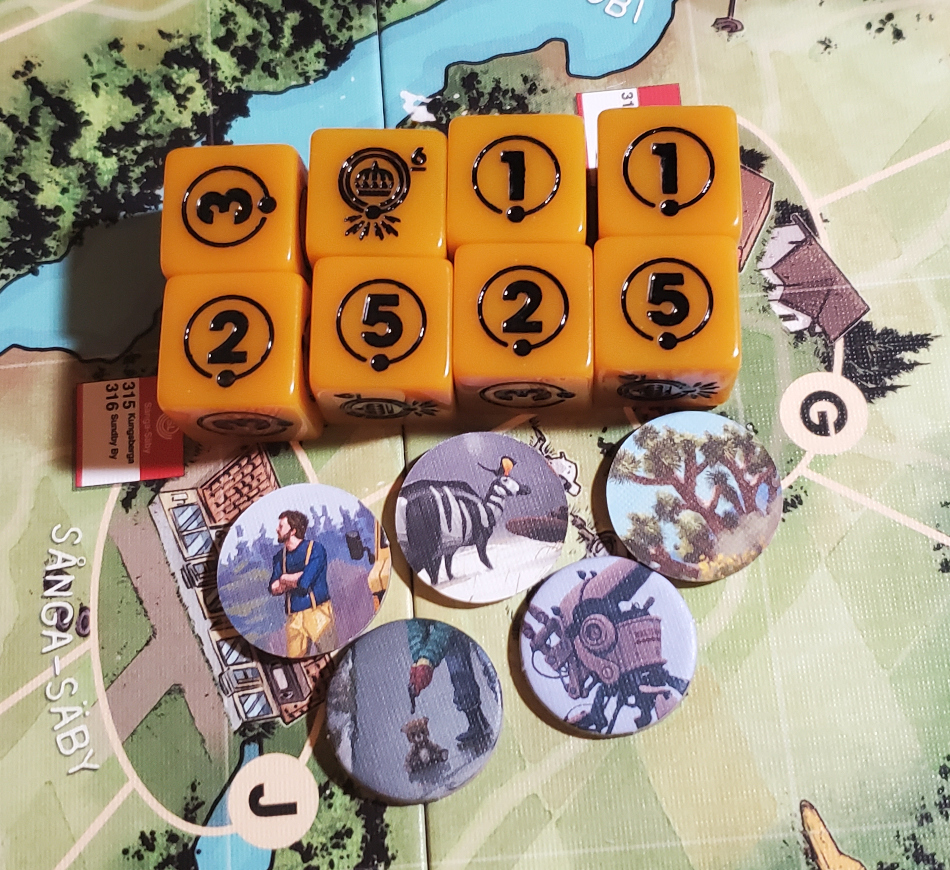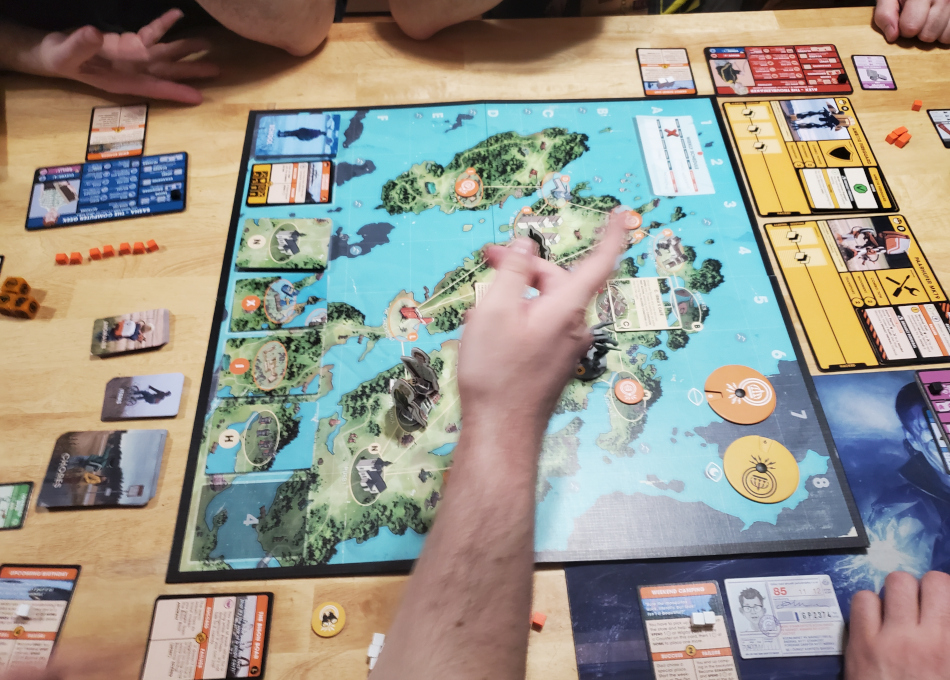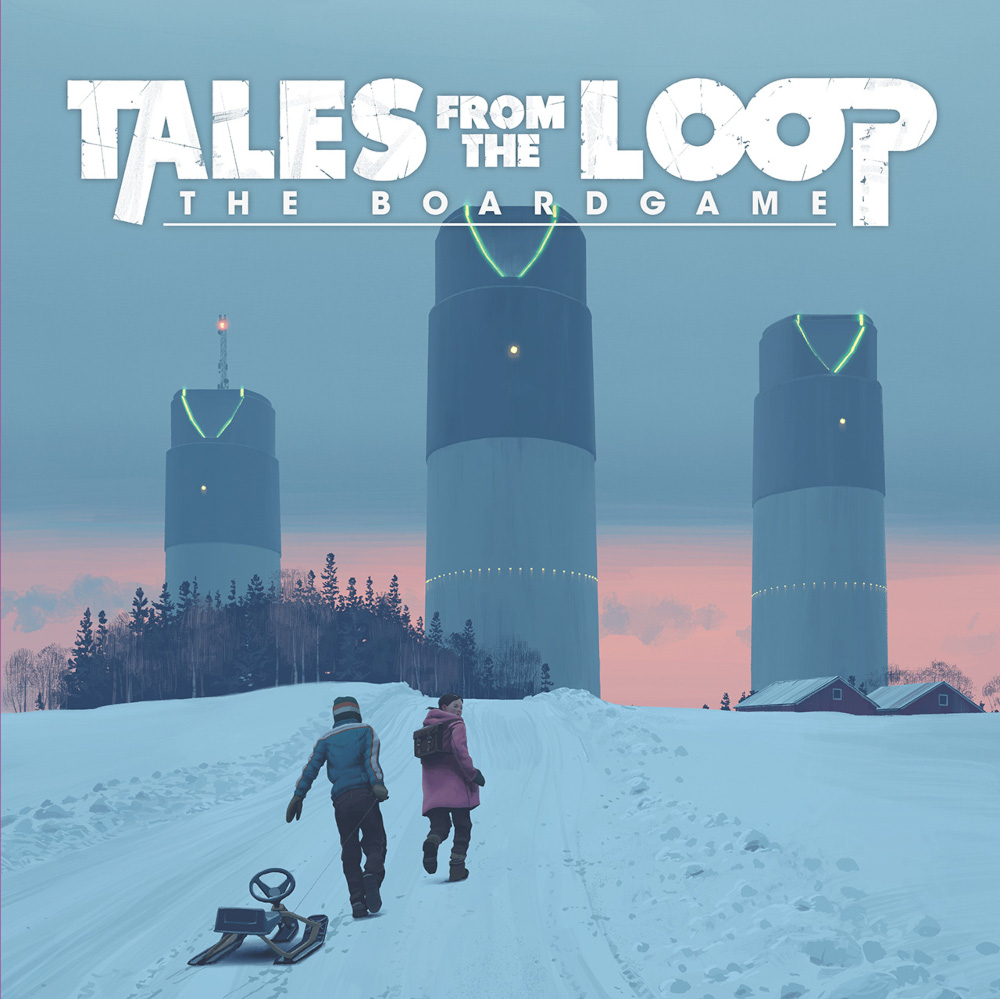
Tales From the Loop: The Board Game
More Videos
Published
2 years agoon
By
Leather Snow
Tales From the Loop is a board game from Free League publishing based on the art book of the same title by Simon Stålenhag. In it, 2-5 players play a group of kids in the ‘80s solving various sci-fi mysteries. Free League was kind enough to send me a free copy to review.
Components
The games comes with 9 standees, 8 dice, 6 machine minis and sheets, 8 dice, 143 assorted tokens,45 time cubes, 5 favor cubes, 35 general counter cubes, 8 character boards and trait tiles, 9 event tiles, 2 dials, 2 summary sheets, a rulebook, a setting book, the game board, and 248 cards. Of those, 7 are scenario cards, 38 are diary cards, 12 are machine response cards, 20 are school cards, 20 are chore cards, 20 are items, 20 are anomalies, and 111 are rumor cards. There are also various bits that go with other things, such as mounts for the standees, stickers to tell the machines apart, and stuff to attach the dials to the board.
Like another game I reviewed, Final Girl, the insert has so many compartments that I was a little confused at how everything is supposed to fit in the box. I don’t think we figured out how everything is supposed to fit, but it does fit. There is some empty space (some of which is reserved for expansion content) but I can’t figure out if we’ve mismanaged packing it up or if there is generally more space than necessary.
I have some minor aesthetic complaints. In the standard edition the minis come unpainted. While I do enjoy painting minis, I’m not super keen on this. The robots are pretty iconic pieces in the Loop art, and I think they really lose something by not being painted.
I also dislike the dice. The color is just not flattering at all. One of my players liked them because they looked like the erasers they used back in school, but I’ve never seen an eraser like that so I can’t relate. I really like some of the specialty tokens though. They all have really nice art and look very good.
How to Play Tales From the Loop
The game takes place in three phases. First is the school phase. Draw a school card and place the new rumors, then the first player resolves the school event. Move the bots and resolve any firmware upgrades or state changes. Next is the adventure phase where each player has six time cubes to spend investigating rumors, hacking bots, doing chores, and trying to get home in time for dinner. Kids who get home in time for dinner maintain favor with their parents, which can be leveraged for car rides, and kids who aren’t home lose favor and risk getting grounded. When everyone is done then play moves to the end phase. Anyone who has more than 4 items has to discard down to 4, then check who was and wasn’t home for dinner, ground anyone who’s lost all parental favor, then heal injuries and resolve chores.
Thoughts
The theme is very well done. Aside from my issues with the robot minis, I think the game captures the Tales From the Loop feel pretty well. However, some of my players had a hard time grasping what Tales From the Loop was. I was the only one in either group familiar with the art book, and I did my best to try and explain it but I don’t think I did a very good job. The game does come with a booklet about the Loop universe but it’s a lot of text to get through and most people would rather get into playing the game than stop and go through it all. I personally think the setting is still really neat and you can still enjoy the theme without knowing the full lore, but enough of my players brought it up that I felt I had to mention it.
A minor detail that one of my players really loved was the dice probability of success table. It tells you how likely you are to succeed at a given task based on how many dice you’re rolling. Most other games with dice-rolling don’t have something like this, and they were excited to see that there was something to help determine which tests would be worthwhile.
The First Scenario
The game recommends that you run Bot Amok as your first scenario. I personally feel you shouldn’t. I tried it twice with two different groups of players and neither went well for a variety of reasons. The two that I’ll mainly focus on are the amount of time commitment it requires and the amount of interaction you need to have with the bots.
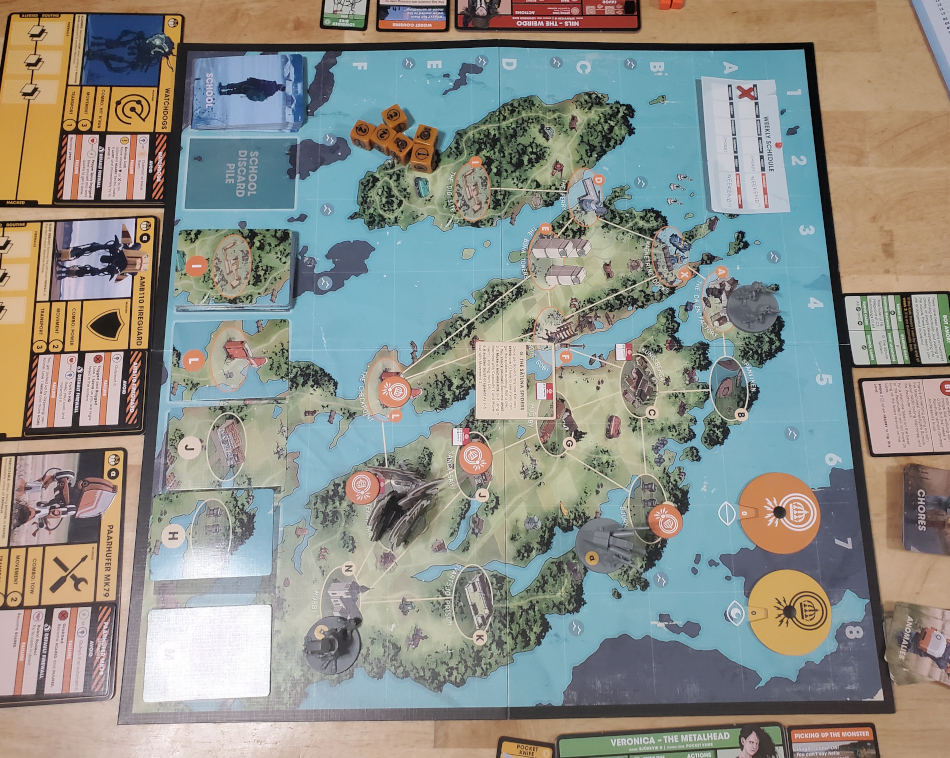
The Bot Amok scenario gives you both weeks instead of just one to complete the scenario. While scenarios that limit you to only one week are technically harder, they can give you a better idea of the amount of time it will take you to play the game, especially on your first run when you aren’t as familiar with the rules. The box has a stated playtime of about three hours, and it generally took about 3-4 hours just to get through one week.
A lot of that time is going to be spent going to the rule book to look something up. It’s an intricate game with a lot of moving parts and it’s hard to keep track of everything. It can be particularly confusing to people who don’t play board games much. The summary sheets help but they don’t have everything you need. There are also certain rules that seem like they should work a certain way, but there’s no direct confirmation in the rules to iron things out.
The bot interaction issue is twofold. One, the scenario starts with 3 robots instead of 2, and due to certain plot events, the robots are harder to maneuver around. In our second attempt, one of our players basically could not go home because there was an angry robot parked outside their house and the consequences for failing the avoid check was to get pushed out of the space. Two, pretty early on in the scenario you’re encouraged to start trying to hack things. Hacking is a mess, and I feel it’s responsible for a good chunk of the problems with the game overall.
Hacking and You
In order to hack, any number of players nearby a machine can spend at least 1 time each. The player who spends the most is the lead hacker who will take control of the robot if the hack succeeds. Each robot has a certain number of firewalls that must be passed for the hack to succeed. Firewalls are randomly drawn and placed on the robot’s board, then players begin to hack. Flip the leftmost firewall token and resolve the one or two skill checks (or special firewall action). Any participating player can make the role or help with the roll. In a 2-3 player game, the lowest amount of firewalls any bot has is 2 and the highest is 4; in a 4-5 player game the lowest is 3 and the highest is 5. If a player fails the firewall while the robot is in routine mode the robot becomes alerted, if it is already alerted the hacking attempt fails and they have to deal with the machine’s response.
In our second attempt at Bot Amok, my character was focused on dealing with rumors and generally not involved with dealing with the machines or hacking attempts, and it was almost like I was playing an entirely different game from the rest of the group. My other two players were frustrated, constantly looking at the rule book to make sure they were doing things right, trying and failing various skill checks. They also had to deal with getting close enough to the machines to try hacking them in the first place, which meant not only spending time to get there but also struggling through even more skill checks to see if they could even enter the spaces near the bot since they were either erratic, alerted, or both. There were so many hoops and hassles that it ultimately ruined the experience for them. We didn’t end the game by winning or losing, we gave up because it had been 4 hours but we were still only halfway through and the other half of the table wasn’t having fun.
In our third playthrough, we tried The Passenger, and generally had a better time, up until we got to the end and we had to go somewhere you could only get to with a machine ride and had to hack a machine. It didn’t feel great and contributed to a general feeling of a lack of player agency. It didn’t come down to what decisions we made or how we organized ourselves, either we succeeded at a repeated series of dice rolls or we did not. In the fourth game we tried Mysterious Islands, which is a much more rumor-focused scenario that we got through without interacting with the machines much at all, and it too was a generally better experience.
So What Should You Run First?
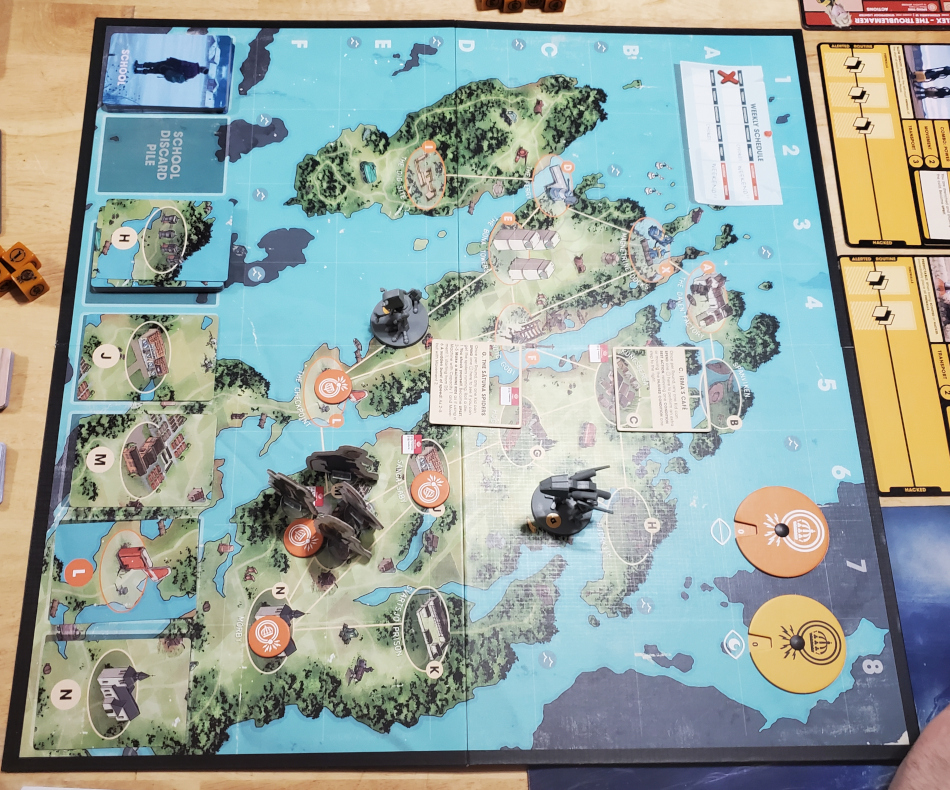
We ran Mysterious Islands again for game 5 with a group of 4 players, 3 of which were new players unfamiliar with the game. They lost halfway through, but they still had fun. It was by far our most successful game. Yes, it is difficult to win, and the lack of direction might put some players off, but I still feel it’s one of the better scenarios for testing the waters and learning the rules due to how straight-forward it is. It can serve as the base for a light-hearted practice run before you get into a bigger mystery.
Other Issues
The game can feel really punishing at times. The consequence for failure is usually taking a condition, which is ultimately a loss of time. Not only is that time locked off, you often have to spend more time to get rid of it. Losing time makes it harder to meaningfully contribute and still get home on time, which punishes you even more by causing you to either not help the team or get grounded and lock off 2 more time cubes. I imagine you’re intended to mitigate this by helping each other with rumor tests and by hacking the machines to make moving around faster, but depending on what rumors you get you might be forced to spread out and not help each other much, and we’ve already discussed the issues with hacking.
Verdict
I give this game 3.5 out of 5 cthulhus. I think Tales From the Loop has a lot of potential, and there were parts I really liked, but there’s a big learning curve and parts of the game can be really frustrating. You can check out Tales From the Loop on the Free League website.

You may like
Gaming
Stygian: Reign of the Old Ones (2019), a Game Review
Stygian: Reign of the Old Ones (2019) is a tactical role-playing video game developed by Cultic Games, evoking Lovecraftian horror.
Published
3 months agoon
April 30, 2024
Stygian: Reign of the Old Ones (2019) is a tactical role-playing video game developed by Cultic Games, evoking Lovecraftian and cosmic horror. Published by Fulqrum Publishing, this game is available through Linux, macOS, and Windows. This review will cover the $19.99 Steam release.
The Great Old Ones have awakened, exiling Arkham after the events of Black Day. Design your character and face the abominations of Arkham. Explore the 1920s through a Lovecraftian aesthetic as you unravel the secrets that plague Arkham, facing unknowable cosmic horror and malicious abominations.
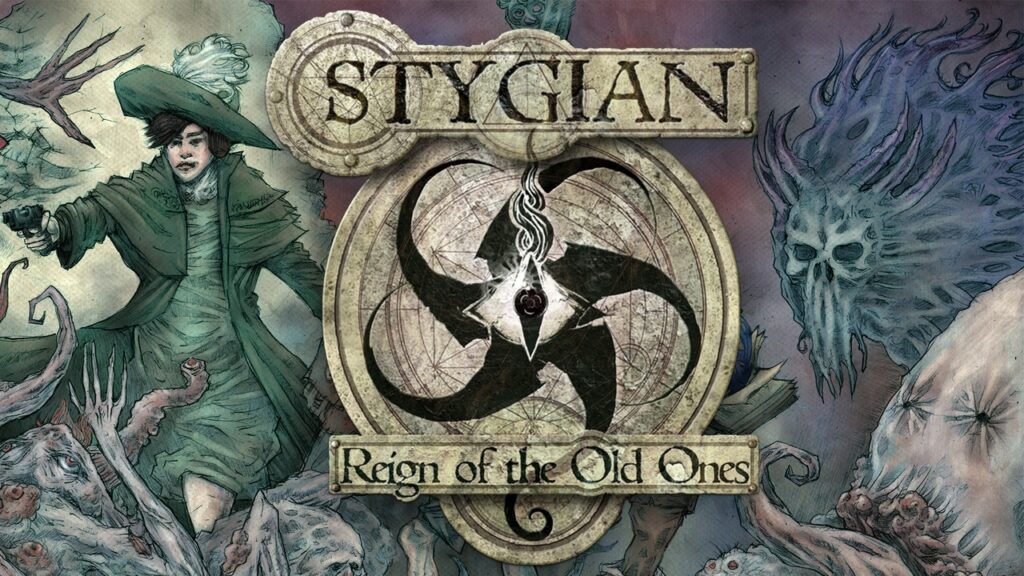
What I Like Stygian: Reign of the Old Ones
The depth of character creation starts the game off on the right foot. While appearance has various options, the game provides greater variety in motives, age, and origins, adding different gameplay elements. For example, age reflects lived experience and physical competency. The younger your character, the less experienced but more physically capable. This dynamic requires trial and error to find the best choice for you.
The paper cutout art provides a unique interpretation of a familiar (but stylish) Lovecraftian aesthetic. While not the most haunting execution of the Lovecraftian, it still manages to unsettle and unnerve while maintaining visual interest. That said, if the style doesn’t suit the player’s taste, Stygian: Reign of the Old Ones might leave that player wanting.
While I find the story engaging and the mysteries worth exploring, there’s a massive caveat to that claim. Regardless, if you fancy the Lovecraftian, few care as deeply and express as much knowledge of the genre as Cultic Games in this installment. This love and knowledge shines through in the often subtle allusions and references to the expanded universe. It may earn its place as the most Lovecraftian game out there.
The characters vary in interest and likability, but there’s usually something about them to add to the overall mystery. Naturally, this remains most evident in the companions that accompany the player on their journey.
In terms of horror, Stygian: Reign of the Old Ones achieves notable success. Despite the subjective points of aesthetics, the game brings out the most unsettling and uncomfortable elements of Lovecraftian and cosmic horror.

Tropes, Triggers, and Considerations
With an understanding of the Lovecraftian comes the question of how to deal with racism. Most properties try to remove this context, but Stygian: Reign of the Old Ones recognizes the text and era (the 1920s) with caricatures such as a lunatic in blackface. I won’t say it fully explores these toxic elements, but it’s not painted in a positive light.
Insanity and mental illness play a large role in the mechanics of the game, such as becoming a key component of casting spells. Loosely related, drug addiction and usage are mechanics with varying degrees of necessity depending on your build.
If these are deal breakers, perhaps give Stygian: Reign of the Old Ones a skip.
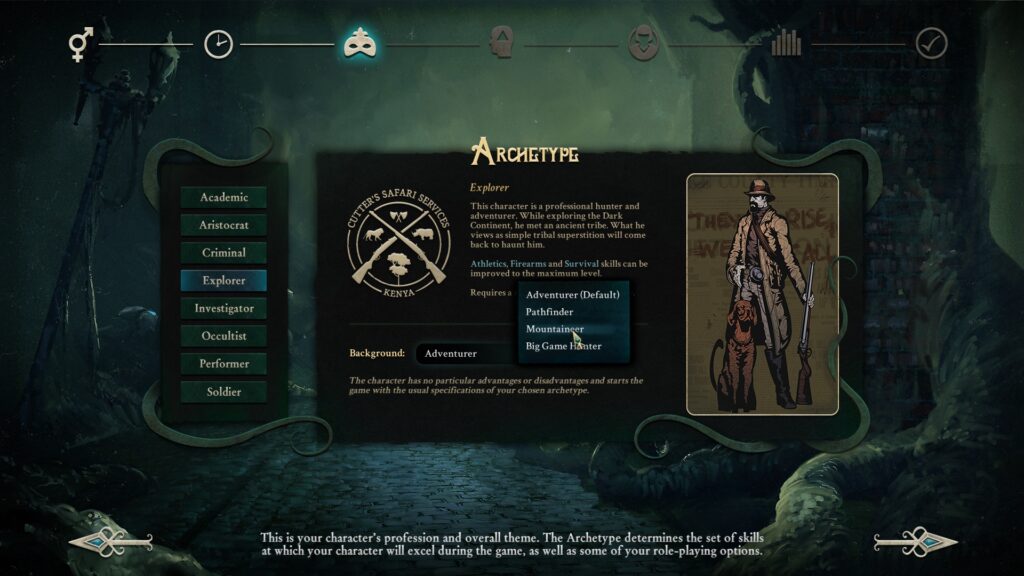
What I Dislike about Stygian: Reign of the Old Ones
In terms of story, this game is unfinished, leaving many plots, quests, and arcs with unsatisfying cliffhangers. My understanding is that Cultic Games planned to finish the game, but money ran out, and the focus shifted to an upcoming prequel. I imagine the goal is to use this new game to support a continuation. But that doesn’t change the unfinished state of Stygian: Reign of the Old Ones. The beginning and middle remain filled with content, but the final act (loosely stated) falls monstrously short.
While this unfinished state mostly affects content, I did run into game-breaking bugs. From my understanding, these bugs completely hinder progress. Most are avoidable, but some are unlucky draws.
It’s these points that make this a challenge to recommend, requiring the potential player’s careful consideration.

Final Thoughts
Stygian: Reign of the Old Ones accomplishes what many games fail, bringing to life the Lovecraftian. Unfortunately, this game falls short at the end and leaves game-breaking bugs as potential deterrents for full enjoyment. If what you read above entices you, it may be worth the investment. However, it’s unfair to recommend this game within its compromised state.
Gaming
Ashen (2018), a Game Review
Ashen (2018) is a souls-like action RPG developed by A44 and published by Annapurna Interactive available across all platforms.
Published
3 months agoon
April 30, 2024
Ashen (2018) is a souls-like action RPG game developed by A44 and published by Annapurna Interactive. This game provides a single-player and multiplayer experience with passive multiplayer mechanics. For this review, I am discussing the 39.99 Steam release, but it’s also available in the Epic Game Store, Xbox, Nintendo Switch, and PlayStation.
In this bitter world, your character seeks to make a home for yourself and others. This goal requires you to fight for every inch of land, building connections and alliances to maintain a thriving village. Venture further to make the world a more hospitable place, but know the further you travel, the greater the threats.
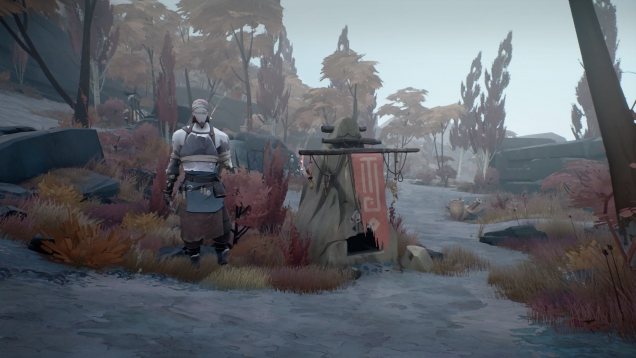
What I Like about Ashen
In 2017, Ashen earned a nomination for the Game Critics Awards’ “Best Independent Game.” It would later earn several more nominations in 2019. At the National Academy of Video Game Trade Reviewers Awards, it received nominations for “Game, Original Role Playing” and “Original Light Mix Score, New IP.” It was nominated for “Most Promising New Intellectual Property” at the SXSW Gaming Awards. Finally, at the Golden Joystick Awards, it earned a nomination for “Xbox Game of the Year.”
The multiplayer experience remains essential for Ashen, focusing on you and a partner venturing together to explore an open-world environment. However, the single-player experience is my focus and the game accounts for this gameplay. Ashen often pairs you with a villager who helps with the challenges.
The art style remains a plus throughout the gameplay. Though muted in colors and lacking finer details, the style creates a unique world that allows players to get lost along their journey. If the aesthetic doesn’t evoke that curiosity, then Ashen becomes hard to recommend.
Vagrant’s Rest and the inhabitants remain a strong incentive to continue on your journey. Seeing the progression of the town and building connections with the people provide the most rewarding experience.
In terms of horror, the art style often evokes an eerie atmosphere. However, I won’t go so far as to say the game is haunting. Instead, it evokes emotions that can unsettle and unnerve the gamer.

Thoughts and Considerations
The souls-like influence remains straightforward. Progression requires the player to defeat enemies and collect currency for weapons or certain item upgrades. Ashen simplifies and focuses its gameplay, reducing variety to polish its choices. The gameplay remains fluid, with a few hiccups that might be a computer issue.
If you prefer magic or defined classes, the gameplay doesn’t enable this variety. Item upgrades and choices define your playstyle, allowing most items to be playable at any stage of gameplay.
Weapons make a greater difference in playstyle. Most of these differences are self-evident (i.e. blunt weapons are slower but stun), but upgrades make any weapon viable. You pick an aesthetic and function, sticking with it until something better catches your eye.
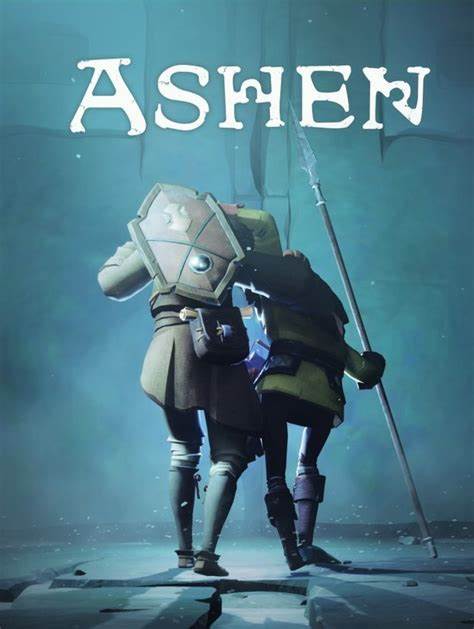
What I Dislike about Ashen
As mentioned, the game had some technical issues. I often assume this to be my computer, but I did note a few others mentioning similar issues. The gameplay remains fluid, so take this comment as a small point of consideration.
With limited roleplay options, liking the characters or art style remains essential for your time and money investment. As mentioned, the game doesn’t hold the variety of FromSoftware, which means their selling point comes from that unique art style and world.
Passive multiplayer is a major part of the marketing for Ashen. While I don’t mind this mechanic, 6 years after release reduces the overall impact. When so few wanderers appear in your game, it’s hard to see the overall appeal.

Final Thoughts
Ashen delivers a highly specialized souls-like experience, preferring to perfect what it can at the cost of variety. If the art appeals and the thirst for a souls-like has you wanting, Ashen stands as a strong contender. However, there are many contenders which make this hard to overtly recommend.
Gaming
I Have No Mouth, and I Must Scream (1995), a Game Review
I Have No Mouth, and I Must Scream (1995) is a point-and-click horror game based on Harlan Ellison’s award-winning short story.
Published
3 months agoon
April 29, 2024
I Have No Mouth, and I Must Scream (1995) is a point-and-click horror game based on Harlan Ellison’s award-winning short story of the same name. Developed by Cyberdreams and The Dreamers Guild, this adaptation brings a new perspective to a familiar story. I heard of free purchasing opportunities for this game but cannot verify the quality. For this review, I played the 5.99 Steam release.
Play as one of the remaining humans on earth: Gorrister, Benny, Ellen, Nimdok, and Ted. Each faces a unique challenge from their common torturer, the AI supercomputer known as AM. Chosen by AM to endure torment, these challenges require the participants to face their greatest failures and tragedies.

What I like about I Have No Mouth, and I Must Scream
Having experienced this story a few times, Harlan Ellison provides the most substantive execution of his vision and moral questions in this game. While all have individual merits, I assume the added content and context better dive into the relevant points he hoped to explore. He also played the voice of AM, giving us the emotional complexity of the machine as he saw it.
As the above comment indicates, I Have No Mouth, and I Must Scream remains a faithful adaptation with only one notable change. While that one change does reflect in that character’s journey, it uses that opportunity to the fullest. Where the short story left room for potentially inaccurate interpretations of the characters, this added context makes us better understand them.
The game’s writing remains a selling point for this story-driven experience. It dives further into the lore of the human characters and even allows further development of AM in the process. There are many ways to progress, and the multiple characters allow gamers to adventure further if stuck. That said, progressing individual characters to complete their journey remains essential for the true ending and experience.
As a point-and-click game made in 1995, I Have No Mouth, and I Must Scream holds up well. In many ways, it pushed the genre in its time with dynamic storytelling and game features. Harlan Ellison was someone who pushed boundaries to challenge himself and others. He saw the gaming industry as another opportunity to evoke story-driven art, a focus reflected here.

Thoughts, Triggers, and Considerations
I Have No Mouth, and I Must Scream adapts a dark and bleak story from an author notorious for his dark material. This game is no exception to that standard. Mental illness, sexual assault, genocide, and torture envelop the game. These elements are handled with attention but remain triggering to those sensitive to such dark material.
If these are deal breakers, I Have No Mouth, and I Must Scream will likely earn a skip.
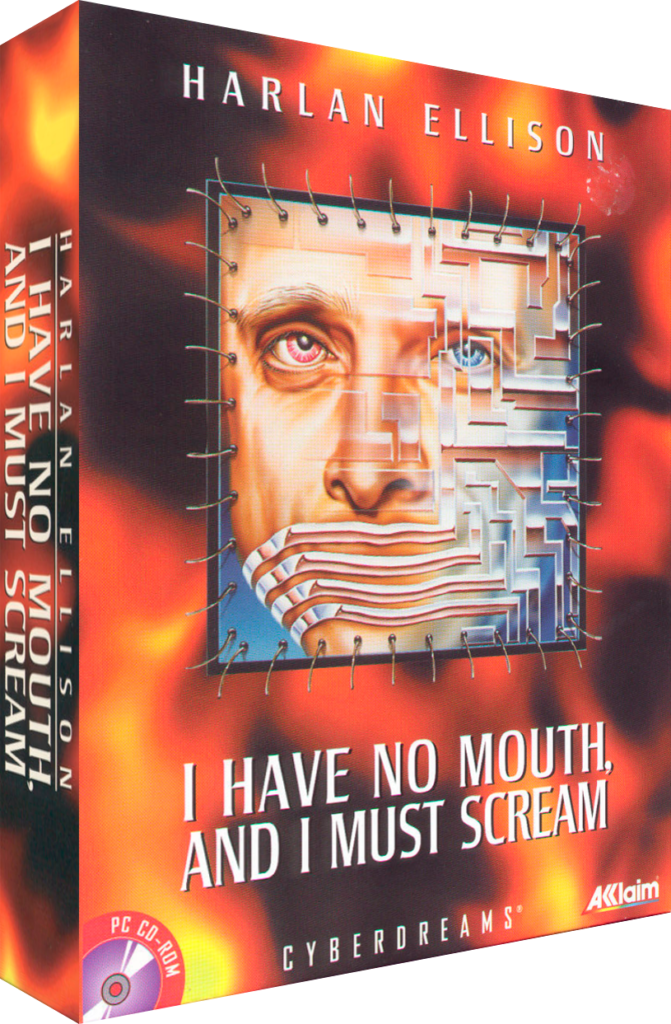
What I Dislike, or Considerations, for I Have No Mouth, and I Must Scream
While the short story remains a haunting example of fiction in every sentence, I Have No Mouth, and I Must Scream doesn’t evoke the same tension. It allows room to breathe or refocus on another character, which reduces the horror such a story evokes. While the characters participate in their torment, the loss of agency and hopelessness doesn’t translate in the execution.
Some mechanical and gameplay issues are noteworthy. For example, the saving mechanic remains dated, piling up if you save often or for specific reasons. Most of the mechanical issues stem from outdated UI from a gamer of a more modern era. Play it long enough, and elements start to click, but it needs that user investment.
Point-and-click caters to a niche audience, so modern gaming audiences aren’t inherently the demographic. The puzzle-solving and gameplay won’t win you over if the genre isn’t to your taste. Even within the genre, many of the puzzles remain challenging. For fans of the genre, this likely earns a positive merit. For those looking to continue the short story, this challenge will prove an obstacle.

Final Thoughts
I Have No Mouth, and I Must Scream provides a new opportunity for the award-winning story to reach new audiences and continue to grow. Not satisfied with repeating his story in a new medium, Harlan Ellison expands this bleak world through the point-and-click game. While not as haunting as the short story, this game provides the most context and development of any adaptation before it.


